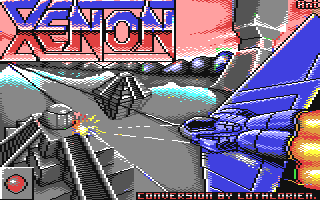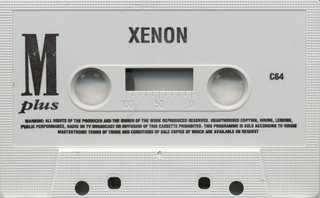Xenon for Commodore 64
Commodore 64Game controls in browser
Show Controller & SystemClick on play Commodore 64 game now button first to start emulator and load the game. Joystick - Keyboard controls:
Xenon
Online version of Xenon for Commodore 64. Xenon is a 1988 2D vertical-scrolling shooter computer game, originally released for the Amiga and quickly ported to other platforms. Excellent graphics, catchy soundtrack, and gameplay turned the game into best-seller on Commodore 64 and Amiga systems, although the PC version much less well received. Like all great SHMUPs, Xenon features smooth controls, well-designed and varied enemy ships , plenty of power-ups, and nonstop action. One neat feature is the ability to change your vehicle from a flying ship to a ground-based tank at any time...
Game details
Other platforms online 4
You can play Xenon online also in a versions for65%
rating (31 users voted)
Covers - Box Art
Commodore 64 Computer
Online emulated version of Xenon was originally developed for the Commodore 64 (also known as the C64 or the CBM 64), an 8-bit home computer introduced in January 1982 by Commodore International. Preceded by the Commodore VIC-20 and Commodore PET, the C64 took its name from its 64 kilobytes (65,536 bytes) of RAM. With support for multicolor sprites and a custom chip for waveform generation, the C64 could create superior visuals and audio compared to systems without such custom hardware. The C64 dominated the low-end computer market (except in the UK) for most of the 1980s.
The C64 uses an 8-bit MOS Technology 6510 microprocessor, 64 KB of 8-bit-wide dynamic RAM, 1 KB of 4-bit-wide static color RAM for text mode and 38 KB are available to built-in Commodore BASIC 2.0 on startup. The graphics chip, VIC-II, features 16 colors, eight hardware sprites per scanline (enabling up to 112 sprites per PAL screen), scrolling capabilities, and two bitmap graphics modes. The C64 has a resolution of 320×200 pixels, consisting of a 40×25 grid of 8×8 character blocks. The C64 has 255 predefined character blocks, called PETSCII.







